Power Pitch
Promising AI Applications in Body MRI
ISMRM & ISMRT Annual Meeting & Exhibition • 10-15 May 2025 • Honolulu, Hawai'i

| 08:15 |
 |
Screen Number: 26
0091. Multicenter,
Multivendor Development and Evaluation of Automated Liver MR
Image Prescription

G. Fullerton, J. Starekova, C. Buelo, D. Harris, R. do
Vale Souza, A. Faacks, A. Anagnostopoulos, A. Murphy, N.
Duritsa, E. Agarwal, L. Müller, D. Kadi, T. Yokoo, M.
Bashir, S. Reeder, D. Hernando
University of Wisconsin-Madison, Madison, United States
Impact: The validated multicenter, multivendor liver
prescription model may improve liver MRI workflow efficiency
and reproducibility. Further, the trained models will be
made available upon publication, providing an important
resource for research and clinical MR applications in the
liver.
|
| 08:17 |
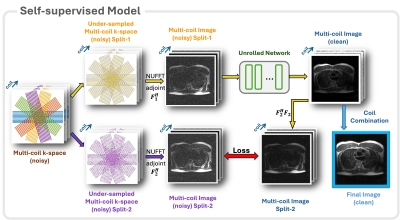 |
Screen Number: 27
0092. Joint
Denoising and Reconstruction of T2-Weighted PROPELLER MRI of the
Lung at 0.55T Using Self-Supervised Deep Learning

J. Chen, H. Pei, M. Bruno, Q. Wen, C. Maier, D.
Sodickson, H. Chandarana, L. Feng
New York University Grossman School of Medicine, New York, United States
Impact: We developed a self-supervised learning-based
joint reconstruction and denoising scheme for lung MRI at
0.55T. The proposed self-supervised model enhances image
quality by reducing noise and improving structural clarity.
|
| 08:19 |
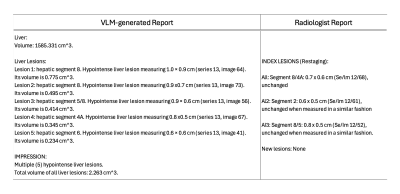 |
Screen Number: 28
0093. Feasibility
of Automated Liver Metastasis Detection and Report Generation in
Gadoxeotic-enhanced Abdominal MRI using Vision-Language Models
Y. Cai, Z. Zhu, P. Bassi, Z. Zhou, K. Wang, Y. Yang
Northeastern University, Berkeley, United States
Impact: VLMs offer a promising approach to enhancing
both the accuracy and efficiency of liver metastasis
evaluation in abdominal MRI interpretation.
|
| 08:21 |
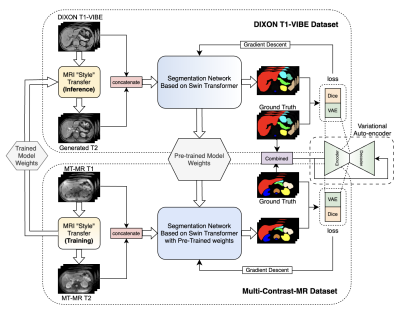 |
Screen Number: 29
0094. Multi-contrast
MR-driven deep learning for abdominal multi-organ segmentation
(McDAMOS)
P. Wang, D. Ruan, J. Chen, J. Xiao, D. Ling, L. Ma, W. Yang,
Z. Fan
University of Southern California, Los Angeles, United States
Impact: Our work demonstrates the utility of
multi-contrast MR in achieving abdominal auto-segmentation
and presents a methodology to address limited data available
from a novel research MR sequence. The approach benefits
clinicians and propelling automated segmentation techniques
forward.
|
| 08:23 |
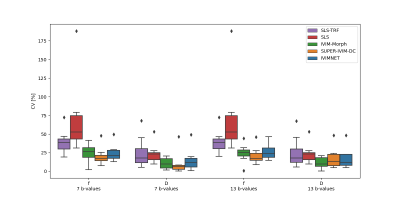 |
Screen Number: 30
0095. Neural
Network Methods Enhance Test-Retest Repeatability of IVIM
Parameter Estimation in Pancreatic Imaging
N. Avidan Pearl, D. Link-Sourani, R. Weiss, M. Freiman
Technion, Haifa, Israel
Impact: This study demonstrates that neural
network-based methods, specifically the motion-robust
IVIM-Morph and SUPER-IVIM-DC for limited b-values, improve
test-retest repeatability in IVIM parameter estimation for
pancreatic imaging, supporting better assessment of
pancreatic conditions and enhancing diagnosis, treatment
planning, and patient outcomes.
|
| 08:25 |
 |
Screen Number: 31
0096. Deep
Learning Synthesized Hepatobiliary Phase Images for Optimizing
Clinical Workflow of Gd-EOB-DTPA-enhanced Liver MRI: A
Multicenter Study
K. Zhao, Y. Liu, Y. Zhang, Y. Xu, Y. Wang, J. Qin, F. Yang,
J. Liu, T. Niendorf, Z. Liu, G. Wang
Guangdong Provincial People‘s Hospital, Guangzhou, China
Impact: Our study demonstrated the importance of an
early HBP scan of 5 minutes for high-quality HBP synthesis.
Our findings help to shorten examination times and support
the optimization of scanning protocols of
Gd-EOB-DTPA-enhanced liver MRI.
|
| 08:27 |
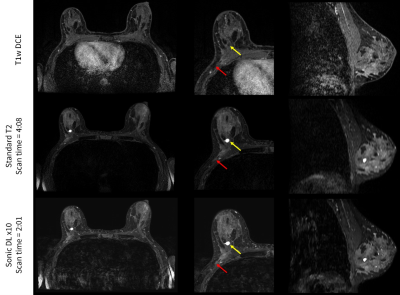 |
Screen Number: 32
0097. Shortening
3D T2-Weighted Breast MRI scan time using deep learning based
reconstruction: A phantom and patient reader study
P. Wang, C. Lu, K. Keen, L. Wilmes, S-H Chou, M. Chung, A.
Lee, X. Zhu, A. Guidon, N. Hylton, B. Joe
GE Healthcare, Menlo Park, United States
Impact: This work demonstrated the feasibility of using
a pseudo-random under-sampled acquisition coupled with deep
learning-based reconstruction (Sonic DL) to reduce 3D T2w
breast MRI scan time by 50% while improving image quality.
|
| 08:29 |
 |
Screen Number: 33
0098. Unsupervised
learning based on clinical factors and MRI radiomic features to
predict 5-year progression-free survival in prostate cancer
G. Hu, X. Liu
Fudan University Shanghai Cancer Center, Shanghai, China
Impact: Unsupervised learning-based bpMRI radiomics
features and clinical factors have high predictive
prognostic value, and these features have the potential to
help to identify high-risk patients at an early stage,
adjust the treatment regimen, and improve the prognosis of
patients.
|
| 08:31 |
Screen Number: 34
0099. WITHDRAWN |
|
| 08:33 |
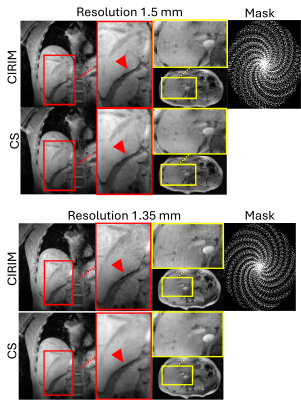 |
Screen Number: 35
0100. Accelerating
Free-Breathing Liver MRI at 7T using Recurrent Inference
Machines
M. Tavakkoli, D. van den Berg, B. A. Runderkamp, W. van der
Zwaag, M. D. Noseworthy, M. W.A. Caan
McMaster University, Hamilton, Canada
Impact: This work advances ultra-high field,
free-breathing liver MRI with deep-learning reconstruction,
offering improved motion robustness over CS. It paves the
way for prospectively undersampled, submillimeter resolution
free-breathing acquisitions in future studies while
maintaining short scan durations and minimizing patient
discomfort.
|
| 08:35 |
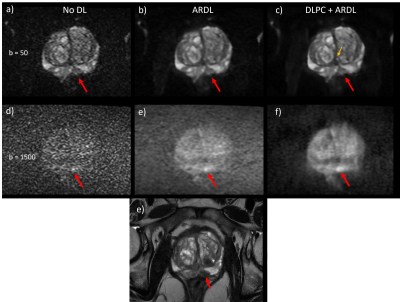 |
Screen Number: 36
0101. Impact
of Deep Learning denoising and ultra-high density coil array on
prostate diffusion imaging
S. Huang, X. Wang, M. Medved, C. K. Follante, Y-J Stickle,
P. Lan, A. Yousuf, R. Engelmann, F. Robb, A. Guidon, G. Lee,
A. Oto
GE HealthCare, Royal Oak, United States
Impact: This study shows a clinically feasible approach
by combining a novel 50-channel pelvic coil with perineal
coverage with DL based reconstruction for an improved DWI
imaging in prostate MR.
|
| 08:37 |
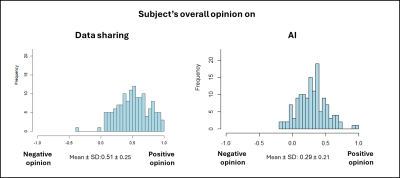 |
Screen Number: 37
0102. Perspectives
on Data Sharing and Artificial Intelligence Among Participants
in Renal Clinical Studies

V. Aramendía-Vidaurreta, L. García-Ruiz, M. Aznarez, M.
Aastrup, M. Bozzetto, P. Brambilla, R.
Echeverria-Chasco, E. S. Hansen, L. Micu, J. M.
Mora-Gutierrez, S. Pasini, A. Raj, S. Ringgaard, N. M.
Selby, A. Strittmatter, T. Vendelboe, G. Villa, I.
Urdea, N. Henrik Buus, N. Garcia-Fernandez, M. Trillini,
S. Francis, L-M Itu, C. Laustsen, F. G. Zoellner, A.
Caroli, M. A. Fernández-Seara
Clínica Universidad de Navarra, Pamplona, Spain
Impact: Current findings highlight the importance of
improving institutional trust and education on AI to foster
patient engagement in data sharing practices, and the use of
AI in medical imaging.
|
| 08:39 |
 |
Screen Number: 38
0103. Harmonization
of AI/DL accelerated quantitative bi-parametric prostate MRI:
demonstration in multi-parametric phantom and patients
D. Malyarenko, S. Swanson, J. Richardson, S. Lowe, J.
O'Connor, J. Fajardo, Y. Jiang, S. Wells, T. Chenevert
University of Michigan, Ann Arbor, United States
Impact: AI/DL-accelerated acquisition implemented on two
clinical 3T MRI vendor systems allows six-minute
quantitative bpMRI for prostate patients. The developed QA
workflow enables harmonization of quantitative T2 and
ADC mapping in multi-vendor clinical settings.
|
| 08:41 |
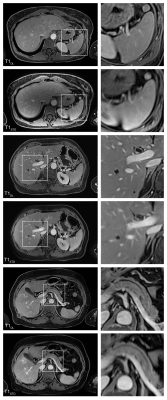 |
Screen Number: 39
0104. Value
of Deep Learning-Accelerated T1-w Dixon MRI for Upper Abdominal
Imaging
J. Fingerhut, T. Scheef, H. Engel, A. Rau, L. Kolbe, C.
Wilpert, R. Strecker, M. Nickel, F. Bamberg, J. Weiss, N.
Verloh
Medical Center – University of Freiburg, Freiburg, Germany
Impact: DL-accelerated MRI optimizes scan time and image
quality, especially benefiting patients with breath-holding
difficulties.
|
| 08:43 |
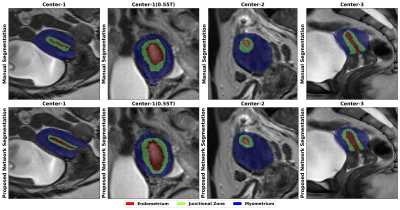 |
Screen Number: 40
0105. Deep
Supervision Attention U-net for segmentation of uterine zones: a
multi-center study
S. Tripathy, N. Castro, M. May, L. Siegler, L. Story, M.
Uder, J. Hutter
Friedrich-Alexander-Universität Erlangen-Nürnberg, Erlangen, Germany
Impact: This study enabled the deep learning-based
automatic segmentation of the uterine zones, that would in
future provide deeper insights into uterine layer changes at
different menstrual cycle points and facilitate the study of
Adenomyosis and other uterine abnormalities.
|
| 08:45 |
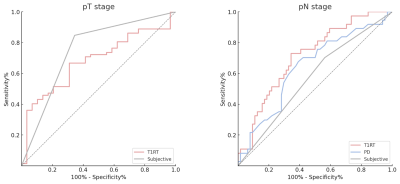 |
Screen Number: 41
0106. The
potential of quantitative synthetic MRI for predicting rectal
cancer stage and pathological characteristics
K. Wang, L. Zhu, W. Feng, Y. Xia, J. Dai, B. Shi, H. Shen,
B. Ding, H. Zhang
Ruijin Hospital, Shanghai Jiao Tong University of Medicine, shanghai, China
Impact: The
standard MRI performs poorly in N staging. Our study showed
qsMRI was significantly superior to subjective assessment
for differentiating advanced N stage RC patients. Therefore,
qsMRI may be used as non-invasive imaging technique for
evaluating and managing RC patients.
|
| 08:47 |
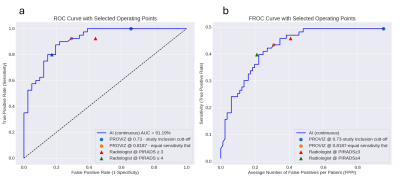 |
Screen Number: 42
0107. Preliminary
Results of Prospective Clinical Study Evaluating Machine
Learning Software for Detecting Significant Prostate Cancer on
bpMRI
M. R. S. Sunoqrot, R. Segre, T. A. Sjøbakk, G. A. Nketiah,
P. Davik, S. Langørgen, M. Elschot, T. F. Bathen
NTNU - Norwegian University of Science and Technology, Trondheim, Norway
Impact: his prospective clinical study suggests that
PROVIZ software can enhance diagnostic accuracy in prostate
cancer care, improve clinically significant lesion
targeting, and potentially reduce unnecessary biopsies,
thereby minimizing overdiagnosis and improving patient
outcomes in prostate cancer management.
|
| 08:49 |
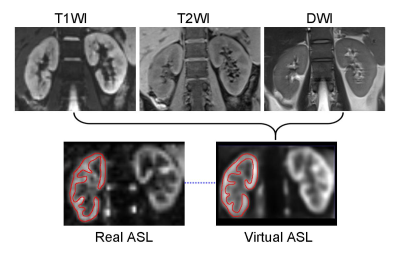 |
Screen Number: 43
0108. Diagnostic
value of deep learning–based renal virtual ASL sequences in CKD
Y. Chen, P. Luo, R. Lai, J. Mo, W. Liu, R. Qi, J. Li, Q.
Chen, Q. Liang, F. Meng, H. Qin, B. Kuehn, Y. Zeng, B. Huang
Shenzhen Traditional Chinese Medicine Hospital (The Fourth Clinical Medical College of Guangzhou University of Chinese Medicine), Shenzhen, China
Impact: This virtual ASL technique enables non-invasive
renal perfusion assessment based on conventional MRI
sequences, potentially expanding access to perfusion imaging
in CKD diagnosis and monitoring. Future studies can explore
its application in treatment response prediction.
|
| 08:51 |
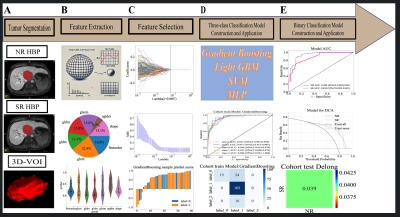 |
Screen Number: 44
0109. A
Deep Learning 3D Super-Resolution Radiomics Model based on
Gd-Enhanced MRI for Improving Pre-operative Prediction of HCC
Pathological Grading
F. JIA, X. ZHAO, Y. XIONG, J. ZHANG
Department of Magnetic Resonance, The Second Hospital & Clinical Medical School, Lanzhou University, Lanzhou, China., LANZHOU, China
Impact: The
study’s findings suggest that super-resolution imaging can
significantly enhance radiomics models’ accuracy in
predicting hepatocellular
carcinoma grades,
potentially leading to better patient stratification and
personalized treatment plans, thus improving clinical
outcomes and guiding future research in oncologic imaging.
|
| 08:53 |
 |
Screen Number: 45
0110. qMRI
enhances standard-of-care for hepatocellular carcinoma
detection: proof-of-concept using Bayesian networks
Y-C Wang, Y. J. Wong, J. W. S. Choo, S. B. Ithnin, G. H.
Lee, M. A. De Roza, K. K. ONG, P. C. Y. Chia, K. T. Tan, N.
C. Tan, H. C. Toh, O. F. Chong, J. P. E. Chang, W. L. Yang,
X. Y. Yeap, C. M. E. Chua, J. S. S. Chua, J. S. Q. Goh, Y.
K. Sim, C. C. Y. Lim, D. Bulte, M. Brady, P. Chow
University of Oxford, Oxford, United Kingdom
Impact: qMRI information increases a clinician’s
confidence in ruling out HCC using either GLMs or BNs.
Additionally, Bayesian networks enable incremental
assessment of new metrics before the completion of data
collection.
|
| 08:55 |
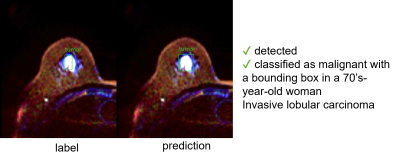 |
Screen Number: 46
0111. Machine
Learning-Based Automating Breast Cancer Detection and
Classification using DWI
M. Iima, R. Mizuno, M. Kataoka, A. Minami, M. Honda, K.
Imanishi, Y. Zhang, H. Satake, R. Ito, S. Naganawa, Y.
Nakamoto
Nagoya University Graduate School of Medicine, Nagoya, Japan
Impact: Potential to boost screening efficiency,
minimize false positives, and improve patient care via more
precise, swift diagnoses.
|
| 08:57 |
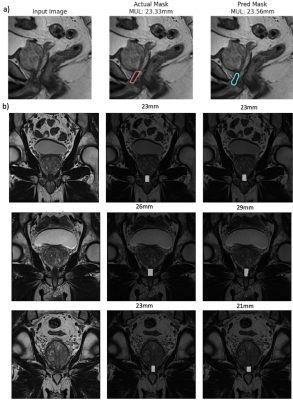 |
Screen Number: 47
0112. Automated
Measurement of Membranous Urethral Length (MUL) on MRI Images
Using Deep Learning
A. Hadjivasiliou, K. Hong, I. Zaffar, L. Dickinson, Z.
Tandogdu, I. Drobnjak
UCL, London, United Kingdom
Impact: By eliminating the need for specialized
radiologist expertise, this automated system could enable
widespread adoption of MUL-based surgical planning in
resource-limited settings, helping surgeons optimize their
approach to preserve urinary continence for prostate cancer
patients.
|
| 08:59 |
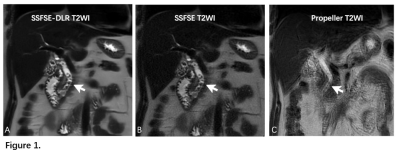 |
Screen Number: 48
0113. Fast
T2WI with DLR-Enhanced SSFSE: A Reliable Solution for diagnosing
Acute Abdominal Pain in Emergency Settings
J. Xu, L. Zhu, W. Liu, W. Liu, Y. Lu, J. Liu, C. Ma, Y.
Zhang, X. Wang, F. Feng
Peking Union Medical College Hospital, Beijing, China
Impact: This study highlights the potential of combining
deep learning reconstruction with SSFSE T2WI to
significantly improve image quality and diagnostic
performance compared to conventional T2WI, offering a rapid
and reliable diagnostic option for evaluating acute
abdominal conditions in emergency settings.
|
| 09:01 |
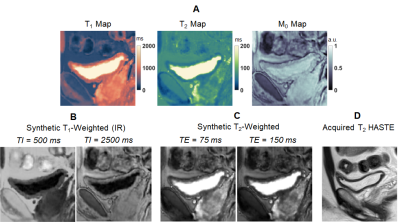 |
Screen Number: 49
0114. 3D
T1, T2, and M0 Mapping of the Bladder Wall in Healthy Subjects
Using Deep Image Prior MR Fingerprinting
J. Hamilton, G. Ippolito, S. Wells
University of Michigan, Ann Arbor, United States
Impact: High-resolution 3D bladder MRF may offer
potential future diagnostic utility in various conditions,
such as overactive bladder, where inflammatory and fibrotic
changes in the detrusor muscle are believed to drive
symptoms.
|
| 09:03 |
Screen Number: 50
0115. WITHDRAWN |
The International Society for Magnetic Resonance in Medicine is accredited by the Accreditation Council for Continuing Medical Education to provide continuing medical education for physicians.